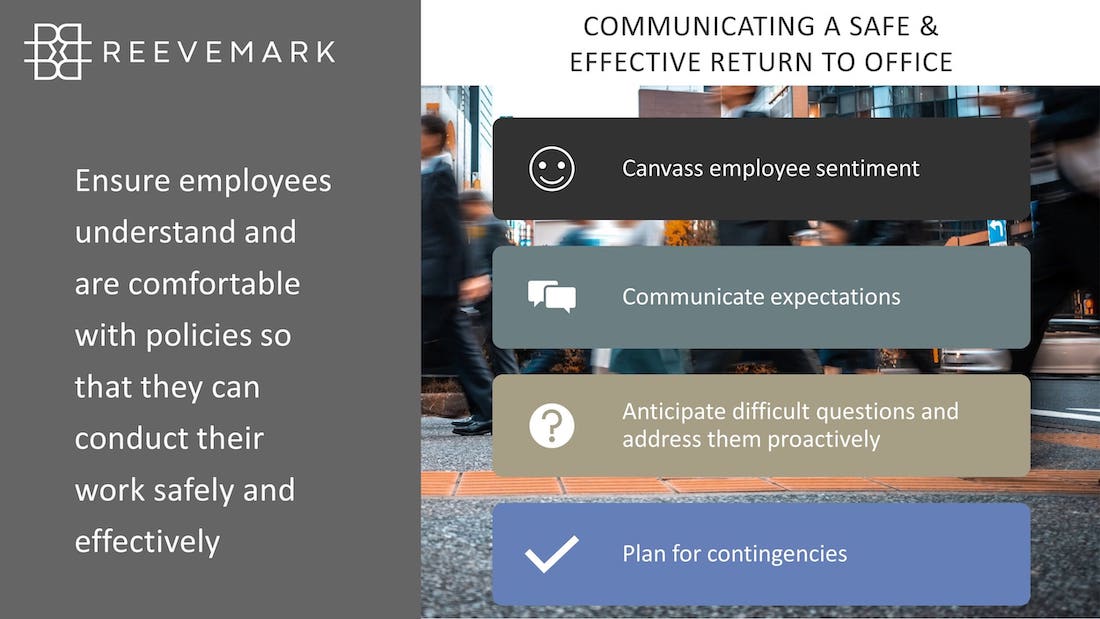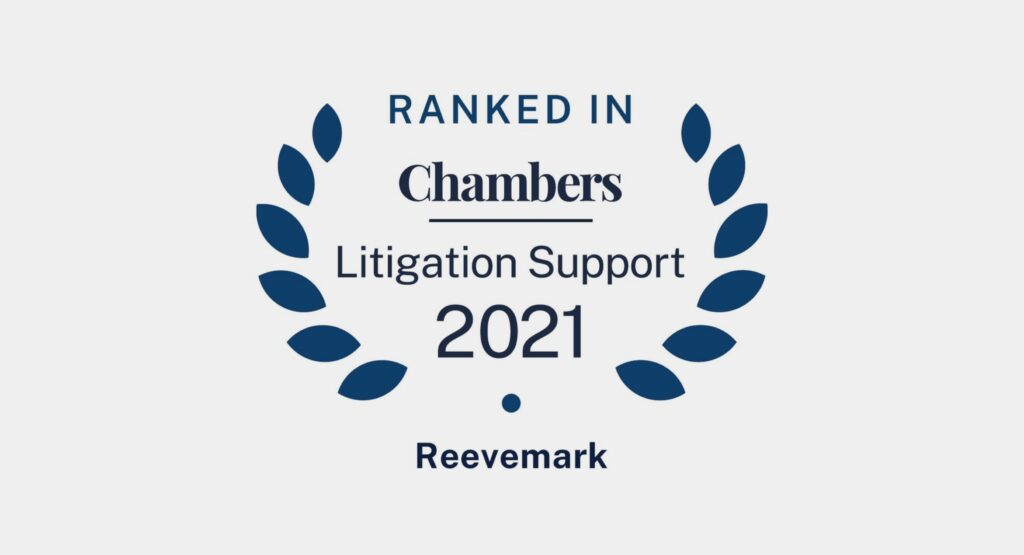Communicating a Safe and Effective Return to Office
“We want people back at work, and my view is that sometime in September, October it will look just like it did before… And yes, the commute, you know, yes, people don’t like commuting, but so what.”
— Jamie Dimon, CEO JPMorgan, Wall Street Journal
With more than 75% of business leaders anticipating a return to office as soon as this summer, it’s time to address the elephant in the room and consider how best to communicate your company’s post-pandemic plans.
Jamie Dimon is in good company when it comes to wanting employees to return to the office sooner rather than later. According to the results of a recent Partnership for New York City survey, almost half of Manhattan’s one million office workers are expected to return to the office by September 2021, and more than 75% of executive management teams who responded to a PwC survey anticipated a return as early as this summer. Employees, however, seem to be less bullish about going back to their pre-pandemic ways. How should employers bridge this apparent gap between management’s expectations and employees’ anxieties?

Be Clear About the What and the Why
One of the most challenging aspects of the pandemic from a communications perspective is the uncertainty it has created. The only thing we know for sure is that the post-pandemic workplace will not look like it did in early March 2020 – at least not in the near term. Every business is making judgments about what measures will work best for its people, and we’re seeing a wide range of options, including vaccine mandates, occupancy limits, hybrid work models, personal protective equipment or some combination thereof. In addition to communicating return to work expectations, clearly articulating the reasons for the new rules will give employees insight about the company’s strategic priorities and how they can best support them.
Have an Open Dialogue with Employees
When the needs of a business conflict with the desires of its workforce, striking the right balance is critical. Canvassing employee sentiment before making decisions about your company’s return to office plans fosters a sense of inclusivity and sends a message that all perspectives are valued. While anonymous surveys promote maximum candor, informal conversations can also be instructive. Once management has determined what is best for the business and communicated its expectations to staff, employers should create open channels that enable dialogue. Giving employees an opportunity to provide feedback and voice concerns will help ease anxiety and, if necessary, enable the creation of individual plans of action that align with the company’s needs.
Plan for Contingencies
Return to office planning is essentially a risk management exercise, and the reality is that we are creating the new normal based on ever-evolving public health information. As virus variants emerge and certain regions are on the verge of locking down again, employers need to plan for worst-case scenarios and communicate their contingency plans to employees. Anticipating the difficult questions and addressing them proactively will help avoid issues down the line. For example, will business travel be expected? What are the consequences for failing to comply with established COVID-19 protocols? Will proof of vaccination be required for all who enter the office? What is the policy for incorporating those who are working remotely on any given day into in-office meetings, or for briefing them after and receiving their input and ensuring they are part of the ongoing work stream? Clear communication can help avoid complications down-the-line, such as productivity loss, complaints, protests and even litigation in severe cases. The goal is to ensure that the employees returning to the office understand and are comfortable with the policies in place so that they can conduct their work safely and effectively.
***
Communications planning is an essential part of transition management. As you contemplate your company’s return to office plan, keep in mind that those who have had the privilege of being able to work remotely for the past year have established new routines that will need to change. While some employees are eager to get back to the office environment, others may prefer the flexibility and other benefits that remote work offers. Successful return to office communications will take this diversity of perspective into account.
The Reevemark team is planning to return to the office in September 2021.

Get in Touch
For more information about Reevemark or to inquire about a potential engagement, please send us an email.
Email Us
